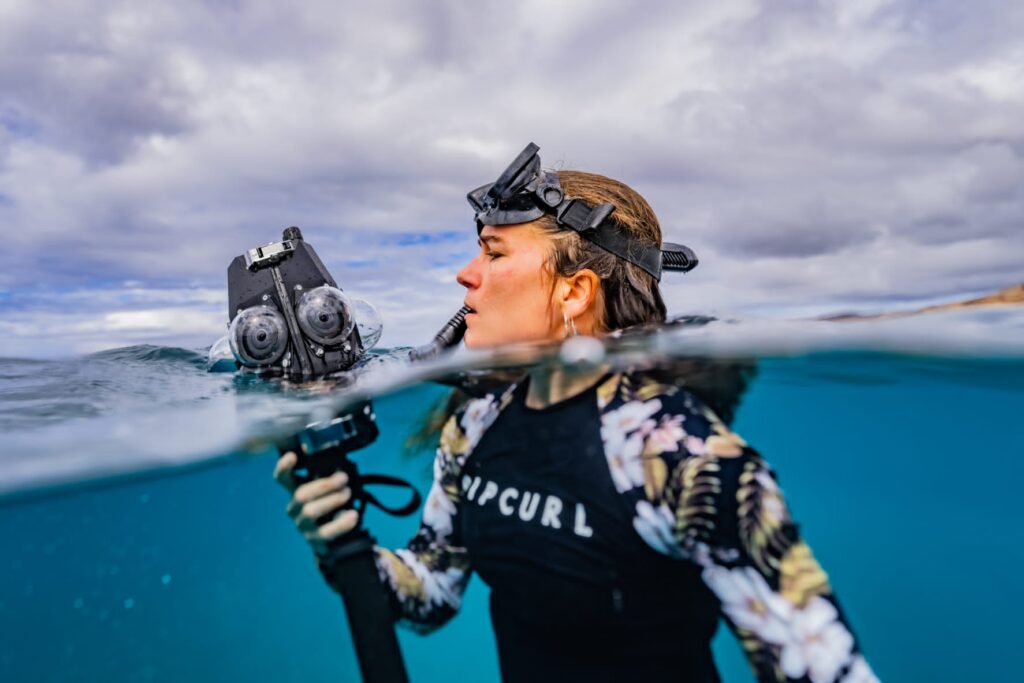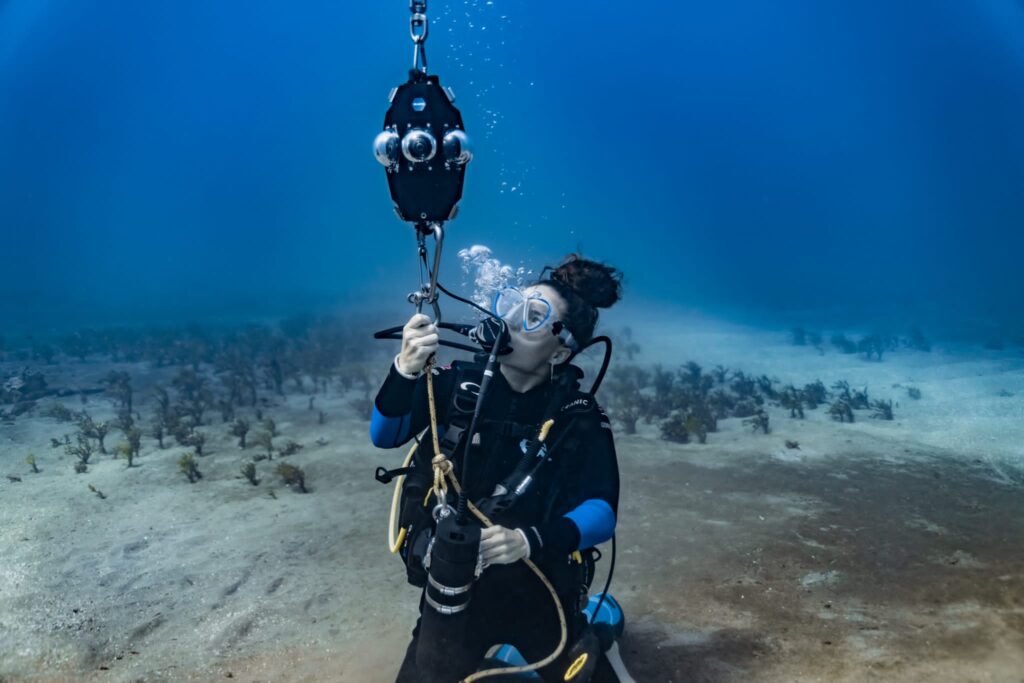It is not the most intellectual of the species that survives; it is not the strongest that survives; but the species that survives is the one that is able best to adapt and adjust to the changing environment in which it finds itself. – Charles Darwin
Our dive boat bounces through another choppy wave, showering our entire field work team with cold salt water. Gripping the metal railing, I notice my hands are coated in a thin, greasy layer of sunscreen and sweat. I grab a towel and rub them clean before opening a pelican case full of camera gear.
As a contract videographer for the Ocean Exploration Trust, working on a salty dive boat with marine scientists is typical. But the equipment I’m using today is far from “typical”.
After flipping open the heavy pelican case, I stare at a 360-degree camera encased in an complex underwater housing. It is the only camera in the world that can shoot 8K stereoscopic (3D) footage underwater. The rig looks a bit like a miniature alien spaceship, and it costs roughly $20,000.
Carefully and methodically, I begin going through the camera’s settings. I have never handled such a sophisticated and expensive piece of equipment in my life. But my job today goes far beyond gently removing this camera from its case. I have been tasked with getting this thing into the water, swimming it down to the ocean floor, and ensuring it records high-quality footage.
I am nervous, to say the least. But I take a deep breath and jump into the water.

Our professional paths can be wildly unpredictable. Especially mine.
When I was in college 15 years ago, I had no idea that my photojournalism major would lead to a career in science communication.
And when I officially started working in this profession 10 years ago, I never could have predicted it would take me on some truly wild adventures, like operating a 3D camera on the ocean floor.
If I have learned anything from the past decade, it is this: I have no idea what the future holds.
While my chosen SciComm specialty (documenting research expeditions at sea) may contain some extreme examples, I believe the ability to adapt is essential to being an effective science communicator.
We live in a volatile and fast-paced world. The rate of advances in science and technology is dizzying. In order to keep up, and to tell compelling stories about scientific endeavors, we must be willing and able to learn new skills. Not just once or twice, but over and over again.
The ways we consume stories (scientific or otherwise) is always changing. Ten years ago, podcasts were a new phenomenon. The same goes for social media. While Instagram and TikTok are great platforms for sharing science content right now, we don’t know if those platforms will even exist in another decade.

That inability to know what’s coming next may cause some to panic. But I believe the variable nature of science communication is part of what makes it so fulfilling. Accepting, and even embracing, the constant evolution of this industry can be a form of empowerment. Our fundamental understanding of science is always expanding, and so are we.
As science communicators, we must adapt. We must harness a willingness to try new things, to push outside of our comfort zones, and to accept the risks that come with new endeavors.
On an individual level, this willingness to adapt will make us more resilient and more capable of facing an uncertain future. Across our profession, it will increase the volume and clarity of the voices we give to science.



Leave a Reply